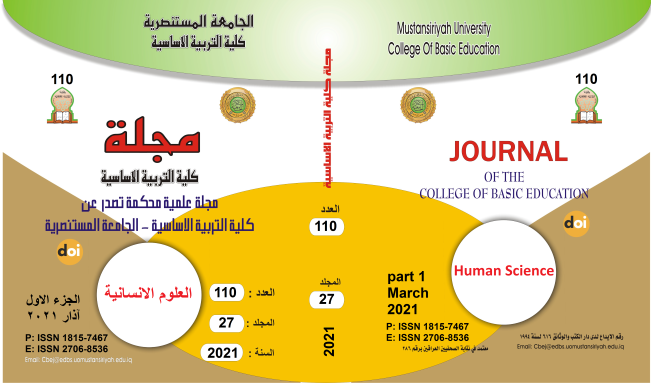The narrative phenomenon of the short story - methodological applications on Iraqi texts
Main Article Content
Abstract
One of the most important commonalities between the styles of literary creativity, whether traditional or modern, is that each one of them has a "narration". It is a phenomenon, because it appears in these patterns, it is triangulated like this: the narrator / the narration / the narration. This trinity, now, is supposed, by him or him, to show a terminological affiliation of 'narrator' with 'narration'. This terminological affinity, which is shown by a triad like this, shows how the “narration” is close to “the narrator” more than it is close to the “narrative” and “narration”, both together, as there is no tale without a narrator, because the “story” from which the “narrative” appears is the sum of Narrated events, in particular, i.e. “narrated” here, where “narration” is the process - verbal or written - that the “narrator” accomplishes by expressing “narrated” for the sake of “narration”. From Vladimir Propp, he took great interest in the pioneering study of Russian wondrous folk tales only (10), about a hundred, relying mainly on a descriptive structural view. Then he was able, thanks to this number - not insignificant - of those stories, to conclude that there are thirty-one jobs, in almost every story, starting with the job of "departure", when a family member leaves his home, and ending with the job of "rewarding", as the "hero" is given A gift of some kind, exactly. If it is wanted, as this is not intended first, to apply orthographical deduction part of these functions, to narrative texts, as difficult as possible, the limit of strict disciplinary, but it is intended starting, closed in sequence, since the first function: departure, specifically, until it reaches to any other job
Article Details

This work is licensed under a Creative Commons Attribution-ShareAlike 4.0 International License.
